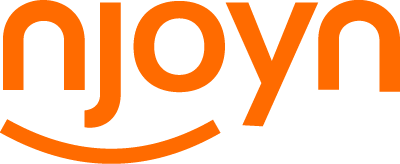
Respecting a Union’s Hiring Rules
Many Ontario healthcare facilities that hire nurses must comply with the collective bargaining agreement (CBA) for the Ontario Nurses’ Association (ONA) union. They need to comply using whatever applicant tracking solution they use.
One CBA provision allows internal members to submit a standing application (also known as a request for transfer form) each year. This form identifies jobs that the ONA applicant wants to be considered for, should an opening materialize.
Here’s how the process looks to outsiders:
1. A new opening compels the recruiter to search for any internal ONA applicants whose standing applications include the job in question.
2. The recruiter considers any such applicants for the job opening.
Labour-intensive unionized applicant tracking
Here’s the rest of the paper-based process, as human resources associate Michelle Robertson remembers it. (Robertson works for Sarnia-Lambton, Ontario’s Bluewater Health.)
1. Robertson received the ONA request for transfer form.
2. She added the form’s information to her systems, keeping the original form on file. “I would keep a spreadsheet with applicant’s names, classifications and the department they want to move to,” she says.
3. Robertson fact-checked and clarified the information on the form. “Applicants might write the name of a department or a location,” she recalls. “I would sometimes have to guess what department they meant. People might write ‘medicine.’ Is it ‘acute medicine?’ ‘Telemetry medicine?’ Just “medicine?”
4. “Any time there was a posting for ONA, I would have to look at the spreadsheet to find people who wanted to automatically be considered for that posting. Then I would have to put them on the list.
5. At the end of each calendar year, Robertson cleared all requests for transfer from her manually updated systems and her files.
Automated unionized applicant tracking
Today, applicants complete requests for transfer in Bluewater Health’s applicant tracking system, Njoyn. Here’s what the previous five-step paper-based process looks like now:
1. Njoyn receives the application.
2. Njoyn stores the information in the database.
3. Fact checking is a thing of the past. Union members choose jobs and departments from drop lists, which both eliminates naming inconsistencies and makes the form easier to complete.
4. Standing applications are never missed. “Before I run the applicant list, I click a few buttons and they’re automatically added to the list of applicants for that posting,” Robertson says. “It’s part of the system, updated automatically (unlike the spreadsheet).”
5. “At the end of the calendar year, Njoyn clears this part of the database, to help us comply with the collective agreement.”
These forms are part of each applicant’s profile in the tracking system, so applicants retain control over their requests for transfer. “If they change their minds, they can delete it,” Robertson says.
“I still use Excel spreadsheets for many things,” Robertson admits. Now I track one less spreadsheet. That’s a relief!”
This is part 3 of our 7 part in depth and expanded case study of how Njoyn integrates and provides solutions for Bluewater Health. Check out our previous blog: We Need to Recruit Staff – Fast! to read part 2. If your ready to read on, click here for part 4: Applicant Tracking Made Easy, and if you would like to learn more about Njoyn you can contact us here.
Search
Most Popular Posts
- 5 Recruitment Challenges Public Organizations Struggle With
- 5 Tips to go from Interview to On-boarding with the Right Candidate
- ‘People Enablement’ Is the Human-Resources Trend You Can’t Ignore
- Challenges The City of St. Albert Faced Before Implementing an Applicant Tracking System
- Njoyn’s New Interview Scheduling Module
150 Commerce Valley Drive West. Markham, ON. L3T 7Z3. Tel: +1 416 553 6756
